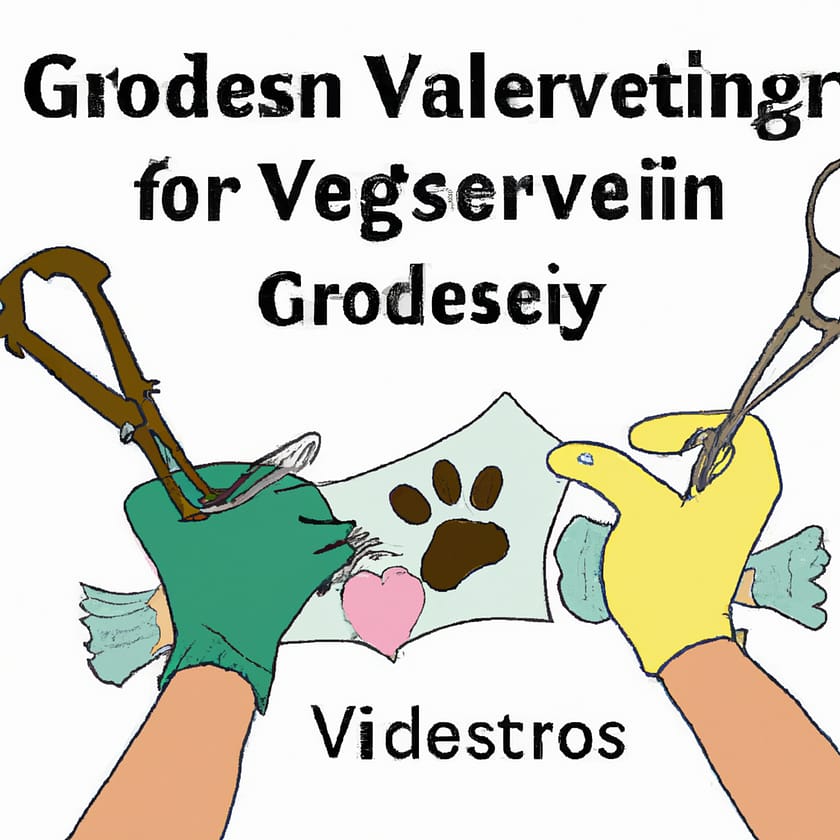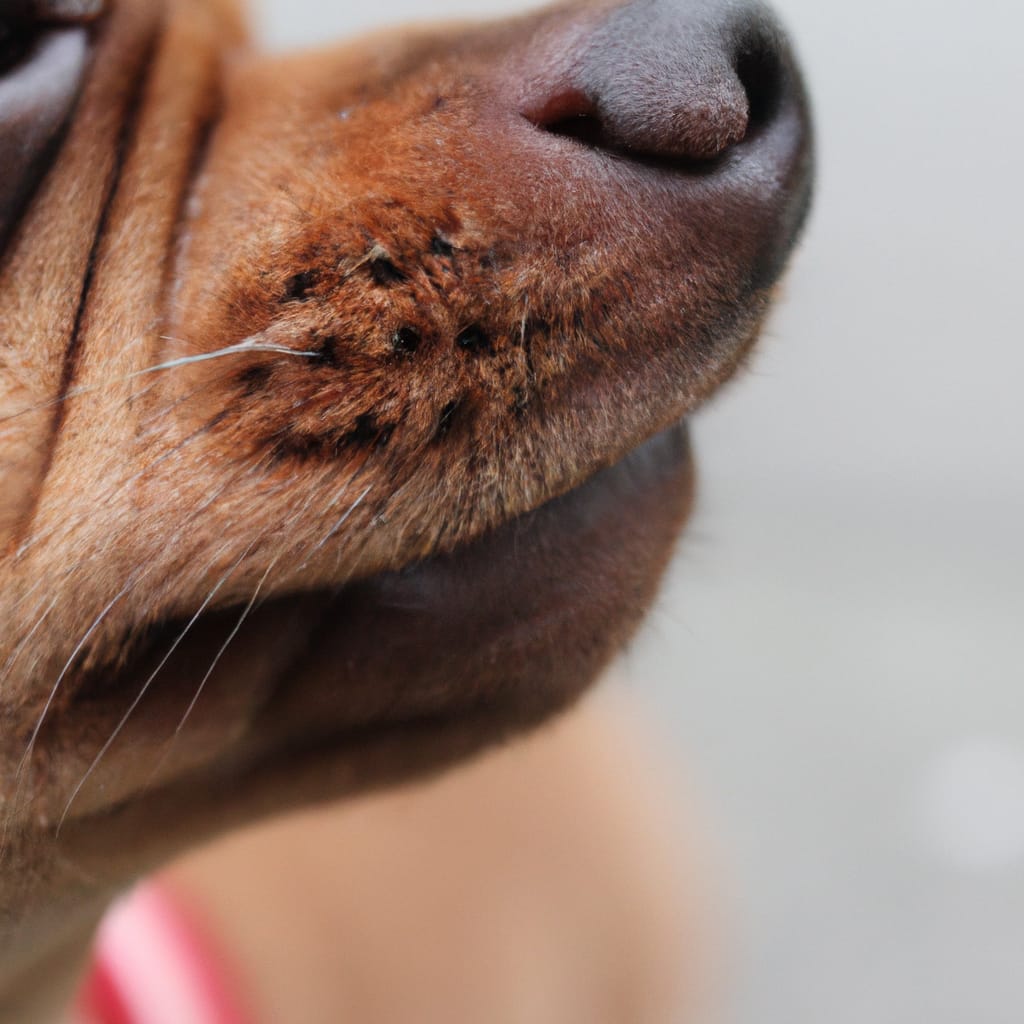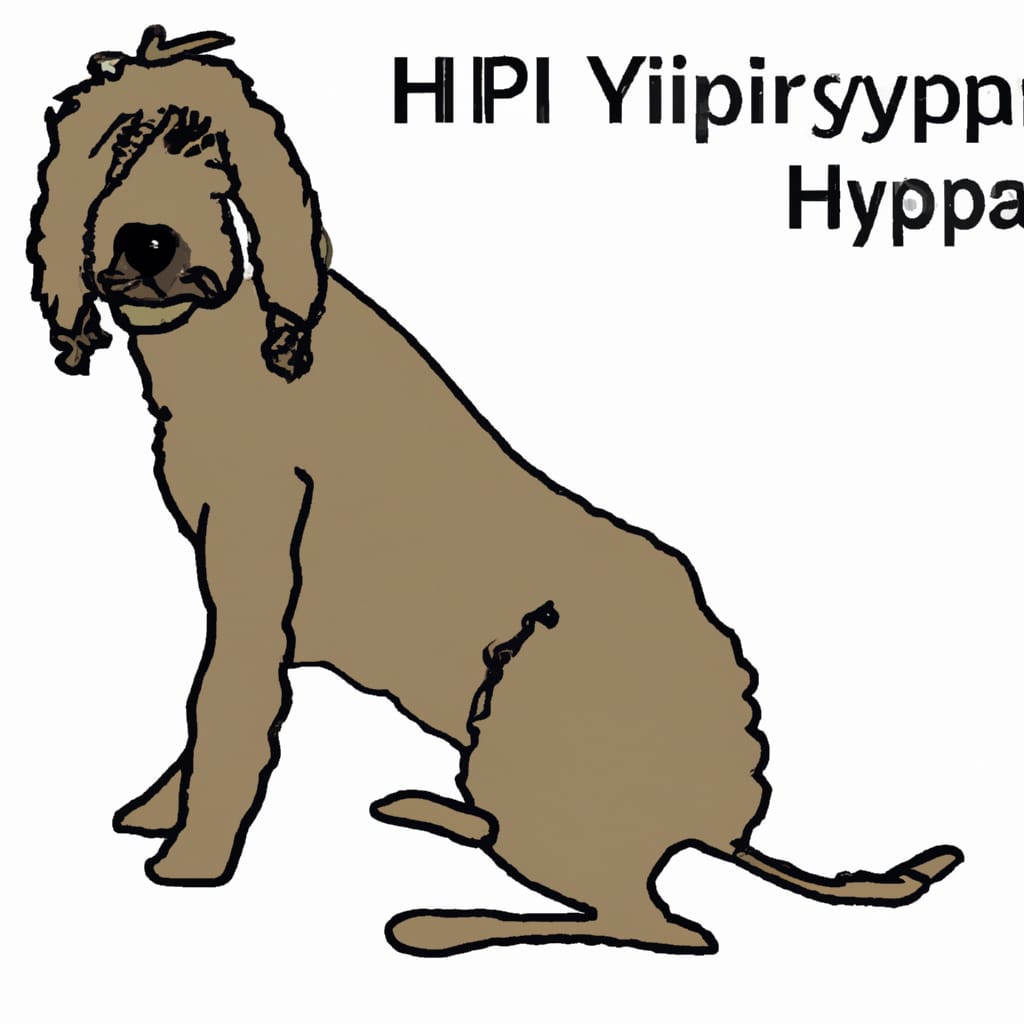Spaying And Neutering: Timing And Health Implications For Doodles
If you’re a proud owner of a Doodle dog, you’ve probably heard varying opinions about when to spay or neuter your furry companion. It’s a topic that sparks debate among dog owners and veterinarians alike. In this article, we’ll explore the timing of spaying and neutering for Doodles and discuss the potential health implications that come with these surgical procedures. Whether you’re considering getting a Doodle or already have one, this information will help you make an informed decision about the best course of action for your beloved pet.

Factors to Consider
Age of the dog
When considering spaying or neutering your doodle, one important factor to take into account is the age of your dog. The timing of the procedure can have significant impacts on your dog’s health and development. It is generally recommended to wait until your doodle has reached sexual maturity before proceeding with spaying or neutering. This typically occurs around six to nine months of age, but it can vary depending on the individual dog. Consulting with your veterinarian can help determine the ideal age for your doodle.
Breed-specific recommendations
Another crucial factor to consider when deciding on spaying or neutering your doodle is the breed-specific recommendations. Different breeds may have different needs and potential health risks associated with spaying and neutering. While there are general guidelines for all dogs, it is essential to take into account any specific considerations for your doodle’s breed. Some breeds may benefit from earlier spaying or neutering, while others may require a more cautious approach. Researching the recommendations for your doodle’s breed can help you make an informed decision.
Health status of the dog
The current health status of your doodle should also be taken into consideration when contemplating spaying or neutering. If your dog is experiencing any health issues, it may be advisable to postpone the procedure until they are resolved. Surgery can put additional stress on the body, and it is crucial to ensure that your doodle is in optimal health before undergoing spaying or neutering. Consulting with your veterinarian and discussing any health concerns can help determine the best timing for the procedure and minimize potential risks.
Timing of Spaying and Neutering
Early spaying/neutering
Early spaying or neutering refers to performing the procedure at a very young age, typically before the dog reaches sexual maturity. Proponents of early spaying and neutering argue that it can help prevent unwanted pregnancies and decrease the risk of certain reproductive-related diseases, such as uterine infections or testicular cancer. However, it is crucial to note that early spaying or neutering may have potential health implications, especially for larger breeds like doodles. The decision to proceed with early spaying or neutering should be made after careful consideration of the individual dog’s health and breed-specific recommendations.
Traditional spaying/neutering
Traditional spaying or neutering is performed when the dog has reached sexual maturity, usually around six to nine months of age for most doodles. This timing allows the dog’s growth and development to progress naturally up to this point. Traditional spaying or neutering can still offer various health benefits, such as reducing the risk of certain cancers and preventing certain reproductive-related diseases. It is generally considered a safe and effective procedure for most dogs but should be discussed thoroughly with your veterinarian to determine the optimal timing.
Late spaying/neutering
Late spaying or neutering refers to performing the procedure when the dog is older, typically after they have already reached sexual maturity. This option may be considered for various reasons, such as when a dog is being used for breeding purposes or if there are specific health concerns. Late spaying or neutering can still provide some health benefits, including a reduced risk of certain cancers. However, it may also carry additional risks, such as an increased chance of orthopedic issues. The decision to pursue late spaying or neutering should be made in consultation with your veterinarian, taking into account the individual dog’s health and breed-specific recommendations.
Health Benefits of Spaying and Neutering
Prevention of reproductive-related diseases
One of the significant health benefits of spaying and neutering your doodle is the prevention of various reproductive-related diseases. In female dogs, spaying eliminates the risk of uterine infections and reduces the chances of developing mammary tumors, which can become malignant. Neutering male dogs reduces the risk of testicular cancer and eliminates the risk of diseases like prostate infections and testicular tumors. By opting for spaying or neutering, you can help protect your doodle from these potentially life-threatening conditions.
Reduced risk of certain cancers
Spaying and neutering can also reduce the risk of certain cancers in your doodle. Female dogs that are spayed have a significantly reduced risk of developing mammary tumors, which are often malignant. Additionally, by removing the ovaries, the risk of uterine infections and ovarian tumors is eliminated. Male dogs that are neutered have a reduced risk of testicular cancer and are less likely to develop prostate infections and tumors. By spaying or neutering your doodle, you can help safeguard their long-term health and lower their chances of developing these serious illnesses.
Behavioral advantages
Beyond the physical health benefits, spaying and neutering can also have positive behavioral effects on your doodle. Intact dogs, especially those not used for breeding, may exhibit more frequent and intense sexual behaviors that can be challenging to manage. Spaying or neutering can help reduce these behaviors, making training and everyday life more manageable. Additionally, it can reduce aggressive tendencies and territorial behaviors, creating a more harmonious living environment for your doodle and your family.
Health Risks of Spaying and Neutering
Urinary incontinence
One potential health risk associated with spaying your doodle, especially female dogs, is the development of urinary incontinence. This condition can cause involuntary urine leakage and may require medical management. While the exact cause of urinary incontinence in spayed female dogs is not fully understood, it is believed to be associated with hormonal changes that occur after spaying. It is important to be aware of this potential risk and discuss it with your veterinarian when deciding on the timing of the procedure for your doodle.
Orthopedic issues
There is some evidence to suggest that spaying and neutering, especially at an early age, may be associated with an increased risk of orthopedic issues in certain breeds, including doodles. These issues can include joint disorders like hip dysplasia or ligament injuries. The hormones produced by intact dogs play a role in the development and growth of bones and joints. Removing these hormones through spaying or neutering may disrupt the natural development process, potentially leading to orthopedic problems. It is essential to discuss the breed-specific risks and benefits with your veterinarian to make an informed decision for your doodle.
Increased risk of certain cancers
Although spaying and neutering can reduce the risk of certain cancers in doodles, it is crucial to acknowledge that there may be a small increase in the risk of other cancers. For example, spayed females have a slightly higher risk of developing certain types of cancers, such as hemangiosarcoma and osteosarcoma. The decision to spay or neuter your doodle should consider the specific breed risks and the potential for trade-offs between different types of cancers. Consulting with your veterinarian can help you understand the potential risks and make an educated decision.

Doodle-Specific Considerations
Breed characteristics
When considering spaying or neutering your doodle, it is important to take into account the specific characteristics of the breed. Doodles are a mixed breed, usually a cross between a poodle and another breed. Their unique genetic makeup can influence their specific health risks and growth patterns. For example, certain poodle crosses may have a higher risk of developing orthopedic issues, while others may be more prone to certain cancers. Understanding the characteristics of your doodle’s breed and discussing them with your veterinarian can help guide your decision-making process.
Growth and development patterns
Doodles often have a larger size compared to some other dog breeds, and their growth and development patterns can be quite different. It is crucial to consider the impact that spaying or neutering can have on their growth plates, which are responsible for bone growth. Early spaying or neutering, especially in larger doodles, may lead to the closure of the growth plates before they have fully developed. This can result in abnormal bone growth and potentially increase the risk of orthopedic issues. Understanding your doodle’s growth and development patterns and discussing them with your veterinarian can help determine the best timing for the procedure.
Coat maintenance requirements
Doodles are known for their unique coat types, which often require regular grooming and maintenance. Before deciding on spaying or neutering your doodle, it is important to consider how this may impact their coat. Some owners choose to spay or neuter their doodles after their coats have fully developed to preserve the desired texture and appearance. However, it is important to note that coat maintenance requirements can vary depending on the individual dog and coat type. Discussing your doodle’s specific coat needs with your veterinarian can help you make an informed decision.
Behavioral Considerations
Effect on aggression and territorial behavior
Spaying or neutering your doodle can have a positive impact on their behavior, particularly with regards to aggression and territoriality. Intact dogs may exhibit more aggressive behaviors towards other animals and humans, especially if they perceive a threat to their territory or when competing for mating opportunities. By spaying or neutering your doodle, you can help reduce these tendencies and create a calmer and more well-behaved companion. However, it is important to note that behavior is influenced by various factors, and spaying or neutering alone may not completely eliminate aggressive behaviors. Additional training and behavioral modification techniques may still be necessary.
Impact on sexual behaviors
Another behavioral consideration when deciding on spaying or neutering your doodle is the impact on their sexual behaviors. Intact dogs, especially males, may display more intense sexual behaviors, such as mounting or marking territory with urine. These behaviors can be challenging to manage and may not align with your desired household dynamics. Spaying or neutering can help alleviate these behaviors, making training and socialization easier. However, it is important to note that individual variations in behavior exist, and some dogs may still display sexual behaviors even after being spayed or neutered. Consistency in training and positive reinforcement can help address these behaviors.
Potential for temperament changes
While spaying or neutering can have positive effects on behavior, it is essential to recognize that it may also result in temperament changes in some dogs. The hormones produced by intact dogs can influence their overall temperament and personality. Removing these hormones through spaying or neutering can potentially lead to subtle changes in your doodle’s temperament. While these changes are generally minimal, it is important to consider them when making a decision. Consulting with your veterinarian and considering breed-specific tendencies can help gauge the potential impact on your doodle’s temperament.
Influence on Growth and Development
Effect on bone growth and closure of growth plates
The timing of spaying or neutering can have a significant influence on your doodle’s growth and development, particularly concerning their bones. Early spaying or neutering, especially before the growth plates have closed, may disrupt the natural bone growth process. This can potentially result in abnormal bone development and an increased risk of orthopedic issues. It is crucial to consider the impact of spaying or neutering on bone growth and consult with your veterinarian to determine the best timing for your doodle’s procedure.
Impact on overall physical development
In addition to bone growth, spaying or neutering can also affect your doodle’s overall physical development. The hormones produced by intact dogs play a role in various aspects of physical development, such as muscle mass and body structure. Removing these hormones through spaying or neutering can result in subtle changes in body composition. For example, some male doodles may develop a more feminine appearance after neutering due to the absence of testosterone. Understanding the potential impacts on physical development and discussing them with your veterinarian can help you make the best decision for your doodle.
Decision-Making Process
Consulting with a veterinarian
When making the decision to spay or neuter your doodle, it is essential to consult with a veterinarian. They can provide valuable insights into your doodle’s specific health risks, breed characteristics, and growth patterns. By discussing your concerns and goals with your veterinarian, you can make a more informed decision tailored to your doodle’s individual needs.
Researching breed-specific recommendations
Researching breed-specific recommendations can also help guide your decision-making process. Different breeds may have different health risks associated with spaying and neutering, and certain breeds may benefit from earlier or later procedures. Understanding the recommendations specific to your doodle’s breed can provide valuable information to consider when determining the timing of the procedure.
Weighing the benefits and risks
Ultimately, when deciding on the timing of spaying or neutering for your doodle, it is important to weigh the potential benefits and risks. Consider the health benefits of preventing reproductive-related diseases and reducing the risk of certain cancers against the potential risks of urinary incontinence, orthopedic issues, and altered temperament. Each doodle is unique, and the decision should be based on individual factors such as breed, health status, and growth patterns. By taking all these aspects into account, you can make an informed decision for your doodle’s long-term health and well-being.
Alternatives to Spaying and Neutering
Partial spaying/neutering
Partial spaying or neutering is an alternative approach that involves removing only a portion of the reproductive organs. This technique aims to preserve some of the hormonal benefits while still preventing unwanted pregnancies. However, it is crucial to note that partial spaying or neutering is not widely practiced and may not be available in all veterinary clinics. Consider discussing this alternative with your veterinarian to determine if it is a suitable option for your doodle.
Chemical contraception
Chemical contraception, including hormone injections or oral medications, is another alternative to spaying or neutering. These methods aim to suppress the reproductive hormones, mimicking the effects of spaying or neutering without the surgical procedure. However, chemical contraception may have its own set of risks and side effects, such as changes in behavior or potential health concerns. Consulting with your veterinarian can help you understand the benefits and risks of chemical contraception and determine if it is a viable alternative for your doodle.
Behavioral modification
For some doodle owners, behavioral modification techniques may offer an alternative approach to managing undesirable behaviors without the need for spaying or neutering. Working with a professional dog trainer or behaviorist, you can explore options such as positive reinforcement training, desensitization, or counter-conditioning to address behavioral issues. While behavioral modification techniques may not fully eliminate all unwanted behaviors, they can provide an alternative solution for doodle owners who prefer not to spay or neuter their dogs.
Conclusion
When considering spaying or neutering your doodle, it is essential to take a comprehensive and individualized approach. Factors such as the age of your dog, breed-specific recommendations, and your doodle’s health status should be carefully considered. Timing is crucial, and early spaying or neutering may carry potential risks, while late spaying or neutering may have its own considerations. The health benefits of preventing reproductive-related diseases and reducing the risk of certain cancers should be weighed against potential risks like urinary incontinence, orthopedic issues, and altered temperament. Consulting with a veterinarian and researching breed-specific recommendations can help guide your decision-making process. It is also important to explore alternatives to spaying and neutering, such as partial spaying/neutering, chemical contraception, or behavioral modification. By considering all these factors, you can make an informed decision that prioritizes your doodle’s long-term health and well-being, while also embracing responsible pet ownership.













